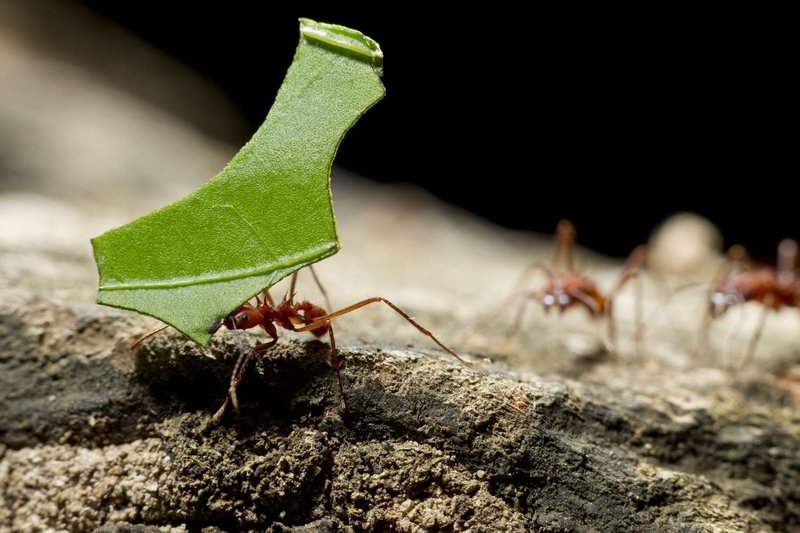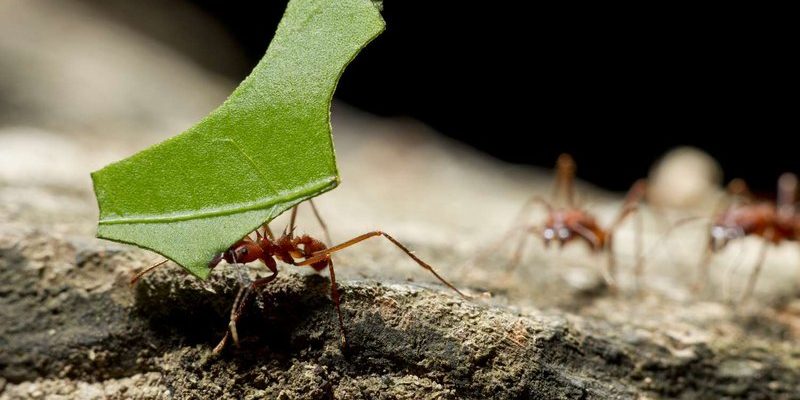
Though we often see ants marching in lines or scuttling about in our yards, their world is filled with surprises. These remarkable insects have lived on Earth for millions of years, and they play a crucial role in our environment. From their unique communication methods to their strength relative to size, ants are a prime example of how incredible nature can be. Here’s a look at some of the coolest facts about ants that will have you appreciating these little critters even more.
1. Ants Are Super Strong
You might think that a creature the size of an ant would have limited strength, but here’s the thing: ants are incredibly strong for their size. In fact, ants can lift objects that are 20 times their own weight! Imagine being able to carry a car on your back! This ability comes from their body structure and muscle composition, which allows them to perform feats that would be impossible for larger animals.
Ants rely on teamwork, and when they work together, their strength multiplies. They can form living bridges and rafts to navigate tough terrains. For example, when a colony faces a flood, they link up to form a floating mass that can save others. Isn’t that just remarkable?
2. They Have Complex Societies
Ants live in elaborate communities known as colonies. These colonies can range from a few dozen to millions of ants, depending on the species. Each ant has a specific job that contributes to the colony’s success. There are workers, soldiers, and queens, each playing a crucial role.
Workers are the backbone of the colony; they gather food, care for the young, and maintain the nest. Soldiers defend the colony from threats, while queens are responsible for reproduction. This organization makes ant colonies some of the most efficient societies in the animal kingdom.
3. Ants Communicate in Unique Ways
You might be wondering, how do ants communicate with each other? They don’t have vocal cords like we do; instead, ants use a combination of chemical signals (pheromones), body language, and even touch! These pheromones are like secret messages that tell other ants where to find food, warn of danger, or signal the need for help.
When an ant finds food, it releases pheromones to lead other ants to the source. If a predator approaches, a different pheromone warns the colony to flee. It’s like a well-orchestrated dance where each ant knows its moves thanks to the signals sent out by others.
4. Some Ants Can Build Amazing Structures
Ants are also expert builders. Certain species can create impressive nests, some resembling tiny skyscrapers. For example, leafcutter ants cut leaves, which they then chew and mold into a kind of fungus garden that serves as their main food source. This is fascinating because they’re farming without any tools!
Additionally, some ants build their nests underground, while others create elaborate structures above ground, such as the towering mounds built by fire ants. These nests can be complex, with multiple chambers and tunnels, showing just how resourceful ants can be.
5. They Have a Diverse Diet
Ants are omnivores, which means they eat a variety of foods. Their diet can include everything from sugary substances (like honeydew from aphids) to seeds, fungi, and even other insects. This diversity helps ants adapt to different environments and survive in various conditions.
Some ants even farm aphids for their sweet secretions, protecting them in return. Imagine a tiny farmer tending to their crops! Their foraging habits and dietary flexibility make them important contributors to ecosystems worldwide.
6. Some Ants Can Change Color
You might think all ants look pretty similar, but did you know that some species can actually change color? Certain ants, like the fire ant, can appear reddish-brown in different light conditions. This ability to change color could be a way to communicate with others in their colony or even help them adapt to their surroundings, making it harder for predators to spot them.
Color changes might also indicate different roles within the colony, such as a soldier preparing to defend or a worker gathering food. It’s like they have their own secret code!
7. Ants Have an Impressive Lifespan
Ants aren’t exactly short-lived insects. Depending on the species, an ant can live anywhere from a few weeks to several years. Queens, in particular, can live for up to 30 years! That’s much longer than many pets!
The lifespan of an ant largely depends on its role in the colony. Workers generally have shorter lives due to the labor-intensive work they do. In contrast, queens can live significantly longer because they focus primarily on reproduction. This longevity helps maintain the colony’s strength and stability.
8. There Are Over 12,000 Species of Ants
With so many different types, it’s astonishing to think that there are over 12,000 species of ants worldwide! Each species has unique traits, behaviors, and habitats. From the tiny pharaoh ant to the formidable bullet ant, each one plays a role in its ecosystem.
You might be surprised to learn that many ants are not found in every country. Some species thrive in tropical regions, while others prefer deserts or temperate forests. This diversity is key to their survival and adaptability.
9. Ants Can Be Good for the Environment
While many people view ants as pests, they play a vital role in their ecosystems. Ants help aerate the soil, which allows water and nutrients to reach plant roots more easily. Their foraging behavior also helps with seed dispersal, promoting plant growth.
Additionally, ants are natural pest controllers. They prey on various insects, helping to keep populations in check. By maintaining balance in nature, ants contribute significantly to healthy ecosystems.
10. Ants Have Their Own “Farmers”
One of the most intriguing behaviors of ants is their relationship with aphids. Some ant species have formed symbiotic relationships with these tiny insects. Ants protect aphids from predators and, in return, feed on the sweet substance that aphids produce, known as honeydew.
This farming behavior highlights the intelligence and adaptability of ants. It’s fascinating to see how they can cultivate relationships that benefit both parties. Imagine having your own farmer, tending to you while you provide nourishment!
In conclusion, ants are not just tiny nuisances; they are a remarkable testament to nature’s complexity and ingenuity. From their strength to their social structures, these little creatures have a lot to teach us about cooperation, resilience, and the interconnectedness of life. So, next time you spot an ant, take a moment to appreciate the extraordinary world they belong to. You’ll never look at them the same way again!

